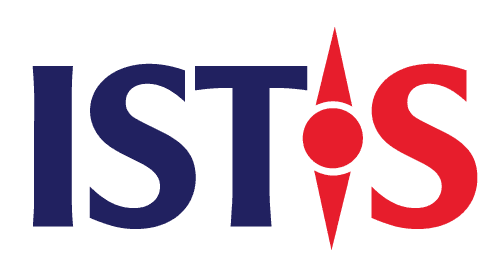Anchor in the Economic and Strategic Narrative
Cloud security is often framed in technical terms—encryption protocols, access control, compliance checklists. But for organizations navigating digital transformation, this perspective is no longer sufficient. In reality, cloud security is emerging as one of the most important strategic levers for long-term growth, resilience, and market trust.
In a competitive business landscape shaped by data, speed, and agility, security is no longer a back-end operation. It’s a frontline differentiator. Companies that invest early in robust cloud security are not just mitigating risks—they’re building infrastructure for scale, customer loyalty, and cross-border expansion. They are also signaling to investors, partners, and regulators that they are ready to compete in a digital-first economy.
This is especially clear in sectors like fintech, e-commerce, and health tech—industries where customer trust and regulatory scrutiny are paramount. Secure cloud systems enable companies to enter new markets faster, meet data sovereignty requirements, and streamline compliance across regions. In short, cloud security is not a cost of doing business. It’s a platform for earning trust, accelerating growth, and securing competitive advantage.
Moreover, in developing economies like Vietnam, where startups and SMEs are embracing cloud-native operations, the presence of reliable cloud security infrastructure is becoming a catalyst for innovation. It’s creating the conditions where experimentation is safe, data is protected, and services can be deployed at scale without compromising integrity.
Real Business Impact
Security tools aren’t just widgets in a tech stack — they are strategic enablers that shape how a business grows, competes, and delivers value. Rather than naming features like IAM (Identity and Access Management) or CSPM (Cloud Security Posture Management) in isolation, it’s time to look at how these capabilities translate into tangible business outcomes.
Take e-commerce, for instance. Every second of downtime or security compromise means lost revenue and lost customer trust. A robust cloud security setup — including real-time threat detection and automated incident response — becomes an engine of operational continuity, allowing platforms to run smoothly through peak shopping periods, flash sales, and cyberattack attempts alike.
Or consider compliance-driven sectors like healthtech, edtech, and finance. With cloud security frameworks designed to meet GDPR, HIPAA, or local cybersecurity laws, companies can enter new markets faster, avoiding regulatory delays. Instead of treating compliance as a roadblock, they treat it as a runway — with security tools as the gears that power takeoff.
The shift to remote and hybrid work models has also elevated the role of cloud security. Securing a dispersed workforce means more than issuing VPNs. It requires Zero Trust Architecture, device posture checks, and continuous monitoring — all of which enable talent mobility, reduce insider threats, and make distributed teams viable long-term.
What’s often missed is this: the best security tools are quiet partners in business growth. They create space for agility, enable strategic bets on new technology, and protect innovation from being derailed by preventable risk. Whether it’s IAM managing permissions across global teams, or CSPM ensuring a cloud-native app meets audit standards in multiple regions — these are not technical luxuries. They’re levers for transformation.
In the most dynamic organizations, cloud security isn’t discussed in the IT room — it’s discussed in the boardroom, with a direct line to expansion strategies, product rollouts, and investor confidence.
Cloud Security in the Context of Vietnam and Southeast Asia
In most global conversations about cloud security, local nuances get lost. Yet in regions like Southeast Asia — where digital transformation is accelerating rapidly, especially among small and medium enterprises (SMEs) — cloud security is evolving under a distinct set of economic, regulatory, and cultural forces.
Vietnam is a case in point. With one of the fastest-growing digital economies in the region, the country is witnessing a surge in cloud adoption across sectors — from fintech and retail to edtech and manufacturing. Yet this growth has outpaced cybersecurity readiness in many areas. As SMEs scale via cloud-based tools, they often lack in-house capabilities to manage risk, making cloud security services not just optional, but essential infrastructure.
Governments are taking note. In Vietnam, policies such as the National Digital Transformation Program and the Cybersecurity Law are driving a wave of public-private collaboration. Cloud security is no longer viewed narrowly as an IT concern, but increasingly as a public good, tied to economic resilience, data sovereignty, and investor confidence.
Across ASEAN, similar dynamics are at play. Regional frameworks — such as the ASEAN Digital Masterplan 2025 — emphasize cross-border trust, cloud harmonization, and shared cybersecurity standards. For cloud service providers, this means adapting offerings to comply with local data protection regimes and building trust in markets where regulatory environments are still maturing.
Startups and local tech companies are stepping up too. In Vietnam, we’re seeing homegrown cloud security firms innovating with localized threat intelligence, automated compliance tools, and managed detection services tailored for ASEAN SMEs. These aren’t just copycats of global models — they reflect the region’s specific threat landscape, infrastructure limitations, and business habits.
What sets the region apart is the co-evolution of policy, market demand, and innovation. In Southeast Asia, cloud security is not catching up to global standards — it’s developing its own. And as digital economies grow more complex, this regional approach may offer a model for other emerging markets navigating the same transformation.
Bridging Security to Trust and Reputation
For digital-first businesses, cloud security is no longer just about risk management — it’s about reputation capital. In an environment where brand value is tied directly to customer trust, even a single data breach can erode years of goodwill. Investors walk away. Customers churn. Regulators close in.
That’s why cloud security services are becoming essential tools not only for protection, but for signaling reliability and earning market trust.
In Vietnam and across ASEAN, this shift is becoming more pronounced. As local firms compete globally — entering cross-border e-commerce, digital finance, and cloud-native logistics — they are being judged not just by their products, but by how well they safeguard customer data. Companies that can demonstrate robust cloud security posture are increasingly winning contracts, forming international partnerships, and attracting institutional capital.
Security certifications like ISO/IEC 27001, adherence to frameworks like GDPR, or alignment with Vietnam’s cybersecurity law are no longer compliance checkboxes — they’re business enablers. In due diligence processes, cloud security posture is now a standard part of investor evaluation. In B2B procurement, it’s a key differentiator.
What’s changing is the language around security. It’s no longer discussed in backrooms with IT managers, but in boardrooms and pitch decks. When a startup founder in Ho Chi Minh City can say their platform uses end-to-end encryption, automated compliance, and real-time incident detection — they’re not talking tech. They’re talking trust.
Even more so, this is influencing hiring and culture. Startups and corporates alike are embedding cyber awareness into employee onboarding, vendor vetting, and executive decision-making.
Predicting the Next Frontier in Cloud Security
The evolution of cloud security is no longer reactive. It’s strategic, predictive, and increasingly autonomous. As digital infrastructures grow more complex — spanning hybrid architectures, multi-cloud deployments, and API-heavy systems — traditional approaches to securing the cloud are reaching their limits.
What’s emerging is a next-generation security mindset anchored in agility, intelligence, and continuous adaptability.
One major shift is the mainstream adoption of Zero Trust Architectures (ZTA) tailored for cloud-native environments. In this model, no user or system is inherently trusted — access must be continuously verified, even within the network perimeter. For fast-scaling companies operating across devices and geographies, Zero Trust provides a critical framework to minimize lateral movement and reduce attack surfaces.
Meanwhile, AI-powered anomaly detection is redefining real-time threat monitoring. By learning from behavioral patterns across environments, these systems can detect subtle irregularities — like a user logging in from an unfamiliar device or a sudden surge in data downloads — and act autonomously. This isn’t just detection; it’s intelligent prevention at machine speed, which is crucial in modern multi-cloud architectures.
A third trend is the rise of Cloud Security-as-a-Service (CSaaS) models, especially beneficial for SMEs that lack in-house security talent. These offerings bundle enterprise-grade tools, compliance support, and real-time monitoring into scalable subscription services. In regions like Vietnam, where digital SMEs are booming, CSaaS is becoming a gateway to global competitiveness — delivering both protection and peace of mind without heavy capital expense.
Looking ahead, cloud security will also converge with supply chain risk management, digital identity frameworks, and automated policy enforcement across geographies. Regulations will tighten, but so will innovation — and service providers that can align compliance with business agility will lead the market.
Ultimately, the role of cloud security is transforming from gatekeeper to growth enabler. For businesses in Southeast Asia and beyond, those who treat cloud security as a living, evolving capability — not a one-time implementation — will be best positioned to thrive in a volatile digital future.






